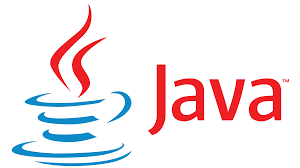Java 面试题(2)
避免使用finalize()方法
finalize()方法会被GC线程调用,但不保证执行。
- finalize()方法不会像constructor()一样调用super finalize()。
- finalize()方法抛出的异常会被GC忽略。
- finalize()降低性能。
notify()和wait()为什么定义在Object class
- notify(), wait(), notifyAll(),用于多线程共享资源。
- 定义在Object class,所有的对象都可以控制调用它的线程必须等待monitor。
- Java使用Hoare’s monitors idea。
- Java不能指定某个线程运行,总是当前的线程远行代码。但是可以指定监视器(调用wait()等待获取监视器,notify()释放监视器))。
- 这是一个好的设计,如果一个线程可以随时改变其他线程等待监视器,就会导致
侵入。这是不提倡的,就像stop()。
DeadLock Example
死锁:两个线程同时持有一些不同的资源,同时请求对方的资源。
一个死锁的例子:
解决方法:多个线程调用资源的顺序一致,a->b。
Transient
Transient关键字表示一个字段不应该被序列化和持久化。
Volatile
- 每一个线程都有自己的本地内存空间,线程的读写操作都在本地内存空间上进行。当所有操作完成,线程把本地内存中修改的变量写回到主内存空间。
- volatile告诉JVM,保证本地内存空间的变量和主内存一致。每一次线程读取某个volatiel修饰的变量时,都会去主内存获取最新的值。
- volatile也可以防止指令重排。
Iterator and ListIterator 区别
- Iterator:Set,List,Map。
- ListIterator:List。
- ListIterator can
- iterate backwards.
- obtain the index at any point.
- add a new value at any point.
- set a new value at that point.
Copy
- Java 默认是shallow copy, 基本类型会创建相同的对象。引用类只会创建同一个引用。
- Java实现copy
- 实现Cloneable接口。
- 覆写clone()方法。
Example
12345678910111213141516171819public class Employee implements Cloneable{private int empoyeeId;private String employeeName;private Department department;// shallow copypublic Employee(int id, String name, Department dept){this.empoyeeId = id;this.employeeName = name;this.department = dept;}protected Object clone() throws CloneNotSupportedException {return super.clone();}//Accessor/mutators methods will go there}手动修改Department to deep copy
1234567/Modified clone() method in Employee class@Overrideprotected Object clone() throws CloneNotSupportedException {Employee cloned = (Employee)super.clone();cloned.setDepartment((Department)cloned.getDepartment().clone());return cloned;}
同时Departments要实现clone()。
序列化实现深拷贝
12345678910111213141516171819public SerializableClass deepCopy() throws Exception{//Serialization of objectByteArrayOutputStream bos = new ByteArrayOutputStream();ObjectOutputStream out = new ObjectOutputStream(bos);out.writeObject(this);//De-serialization of objectByteArrayInputStream bis = new ByteArrayInputStream(bos.toByteArray());ObjectInputStream in = new ObjectInputStream(bis);SerializableClass copied = (SerializableClass) in.readObject();//Verify that object is not corrupt//validateNameParts(fName);//validateNameParts(lName);return copied;}Using Apache commons
内部使用序列化,deep copy1SomeObject cloned = org.apache.commons.lang.SerializationUtils.clone(someObject);Best Practices
123456if(obj1 instanceof Cloneable){obj2 = obj1.clone();}//Dont do this. Cloneabe dont have any methodsobj2 = (Cloneable)obj1.clone()
&& and & 区别
- & 是位运算符,&&是逻辑运算符。
- && 左边是true,就不会执行右边的。
访问修饰符
| Modifiers | Same Class | Same Package | Subclass | Other packages |
|---|---|---|---|---|
| public | Y | Y | Y | Y |
| protected | Y | Y | Y | N |
| default | Y | Y | N | N |
| private | Y | N | N | N |
Java native 方法
native关键字修饰的方法,使用JNI调用非Java的方法。
- 调用非Java写的方法。
- 需要调用系统资源相关的方法
